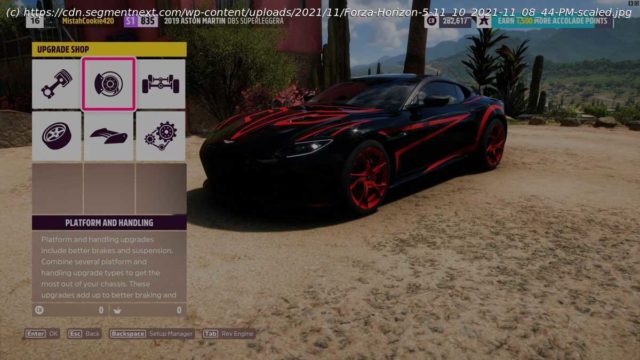In this guide, we’ll be going over Forza Horizon 5 Tuning and how you can use it to make an optimized car based on your preferences
Tuning in Forza Horizon is integral if you want to stand out in multiplayer and compete with other professionals. In this guide, we will get you up to speed with all the options available in the Forza Horizon 5 Tuning menu. In Forza Horizon 5, there are many pre-made tuned builds, that can be downloaded. However, if you want to get the most out of your vehicle, you should learn how to tune it yourself. Our guide on Forza Horizon 5 Tuning goes over the different options and which aspect of your car improves in correspondence with the different available options. Modifying your vehicle can really help you climb the leaderboards through the racing world. It doesn’t matter if it’s a Drift Zone or a race with your friends, with the right parts, you can conquer the racing track! So, without further ado, let’s begin! While going over the Forza Horizon 5 Tuning menu, you’ll find that some options are locked due to the corresponding updates not being installed. You can head to the upgrades windows and find all the relevant upgrades in the yellow box. Understeer and oversteer are two very important terms in FH 5 that you should know about. Understeer means that the car is not turning as much as you want it to whereas the oversteer is the complete opposite of it, meaning that the car is turning more than you want it to. Tuning aims to rectify the respective problems, caused by both Understeer and Oversteer. Differential controls how much power goes to either the left or the right wheel. A front-wheel-drive car only has a front differential whereas a rear-wheel-drive car only has a rear differential. As for an all-wheel-drive car, it has all three of the front, rear, and center differentials. If your differential is entirely locked, the tire of your car, that is in the air, as well as those on the ground will move at the same rate, whereas for the maximum differential, the tires in contact with the ground will spin at a greater rate. Ideally, you want your inside tires to rotate much slower as compared to the outside tires. Now, coming to the particular settings of the differential, let’s first go over the rear differential. Rear differential plays a vital role in the balance of understeer and oversteer. Generally, for the rear differential, you’d want a higher acceleration, ideally between 50-90%; for a high-powered car, you can go much closer to the upper extremity. Now, coming to the front differential, you’d want its acceleration to be somewhere between 10-50%.






